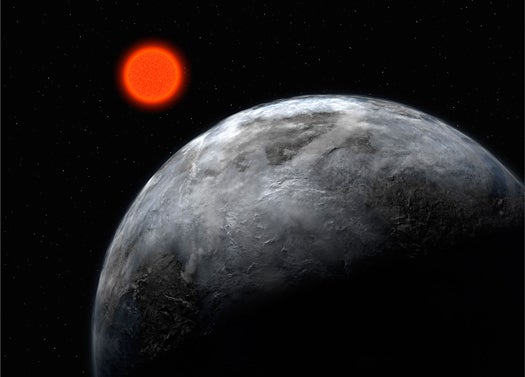Rogue ‘Steppenwolf Planets’ That Have Escaped From Their Suns Could Harbor Alien Life, Astrophysicists Say
If you don't need to be in a solar system to have liquid water, then why not take your planet for a spin around the galaxy?

Lonely Earth-like planets with tumultuous cores could conceivably support life even if they had no stars, a new study says. Researchers Dorian Abbot and Eric Switzer at the University of Chicago have dubbed these theoretical worlds “Steppenwolf planets,” because “any life in this strange habitat would exist like a lone wolf wandering the galactic steppe.” And because they were born to be wild.
Rogue planets that have been kicked out of their solar systems (which is apparently common throughout the cosmos) could host oceans of liquid water as long as the planet’s core is heated, and if the water is buried beneath a layer of protective ice, the researchers say. Liquid water is generally considered a prerequisite for life.
A planet just 3.5 times the size of Earth, with Earth-like composition and roughly Earth-like age, could theoretically maintain a subglacial liquid ocean, Abbot and Switzer say. If it had about 10 times more water than Earth or a really thick atmosphere, it would only need to be about 0.3 times the size of Earth. That’s a little bigger than Mars and smaller than Venus, according to Technology Review’s arXiv blog.
Just like Earth, the Steppenworld would need an active mantle to maintain geothermal heat, keeping at least some of the water in liquid form. This is different from the tidal forces that keep Europa’s oceans liquid, so the planet could exist all alone, with no companion stars or planets to keep it warm.
There are a lot of unknowns, however, including the roles of convection and conduction in transferring heat. Still, it’s an interesting theory — rogue planets careening through the cosmos could be one way to spread life throughout the universe. And, as Abbot and Switzer point out, we would be able to see them through powerful telescopes if one traveled through our cosmic neighborhood.